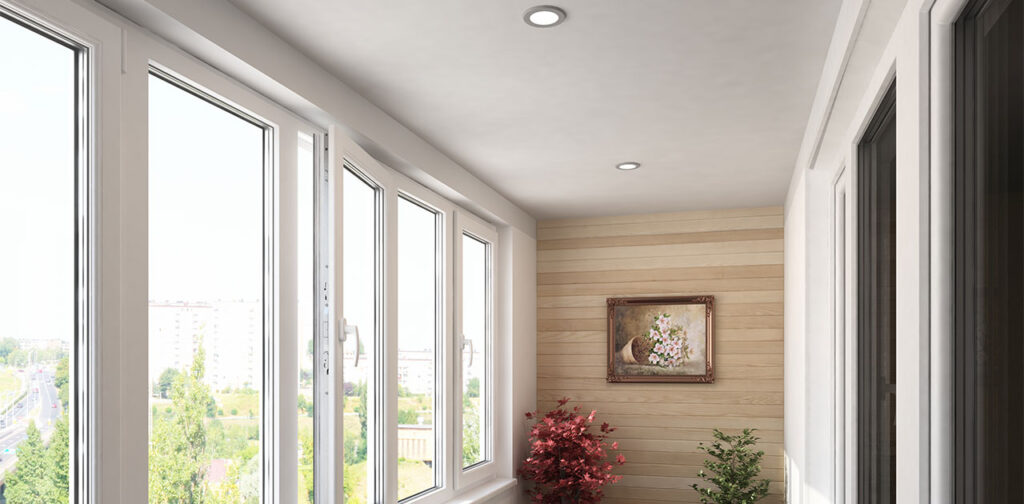
Ask Woodiwiss: Can ceiling paint hide cracks?
Things to know about using ceiling paint for repairs
- You can use ceiling paint to hide cracks and imperfections caused by cracked ceiling paint or a structural issue — assuming the issue is repaired.
- You can use ceiling paint on small wall cracks, but it may appear flat.
- Ceiling paint is thicker than most paint for interior walls, which reduces dripping.
- Cracked ceiling paint may indicate water damage, a heavy floor load above, or other structural issues.
These are the six most common ceiling cracks you’re likely to find
We hear it a lot: “Can’t I just paint over that crack?”
Sometimes, yes, with the right paint and on the right kinds of cracks. People selling a home are seemingly more likely to cave in to the urge to paint over even the largest cracks to avoid costly repairs.
But cracks tell a story. It’s important you know what they’re trying to tell you.
Here are the most common kinds of cracks on and near ceilings you’re likely to encounter:
- Hairline cracks appear as thin as hair or slightly larger. These are typically caused by drywall suffering from extreme humidity and temperature changes over time. These are mostly harmless and can be covered with new drywall or ceiling paint.
- Straight ceiling cracks appear almost suspiciously straight and are usually caused by a lack of plaster or drywall mud between the drywall joints. These do not indicate structural problems, just a lack of joint compound.
- Discoloration cracks, usually yellow or brown, are often signs of a water leak. You must find the source of the leak to prevent them from reappearing or causing a severe issue like mold.
- Spiderweb ceiling cracks branch out in a web-like pattern, are usually caused by a settling foundation, and aren’t usually a problem so long as they’re less than 1/16th of an inch thick. Anything larger and you might need a structural engineer to take a look. Spiderweb cracks are also common near doors and windows.
- Wall-to-ceiling cracks will look like the ceiling is trying to pull away from the wall. This is caused by a truss uplift, which is often caused by excess moisture damage from humidity or temperature swings. Roof trusses are designed to fluctuate, but too much fluctuation and the ceiling can’t take the pressure. They’re a severe structural problem and should be dealt with by a general contractor or professional.
- Bowed ceiling cracks or large cracks are likely caused by other structural problems and you should give them immediate attention.
Ceiling paint is designed to adhere better than wall paint
Ceiling paint is versatile, and you can use ceiling paint to cover hairline, straight ceiling, small spiderweb cracks, and other minor imperfections that appear over time so long as the cracks aren’t worsening.
If you’ve just noticed a small crack, don’t immediately cover it up. Observe it to ensure it’s not growing larger.
We sometimes put a small pencil mark or a date next to the edges of a crack, then check back in the days or even weeks after to see if it’s growing.
Some tips to remember:
- Ceiling paint is flat, and if your walls use latex paint, oil-based paint, or anything with a sheen, using ceiling paint on the walls makes for a visibly “flat” spot.
- Ceiling joists with loose mesh or joint tape will continue to create cracks. The only way to fix that is to sand down to the surface to repair or replace the drywall.
- Plaster ceilings can develop cracks caused by poor workmanship the last time someone painted them. Fix them for good by ensuring the plaster is smooth, dry, and adequately insulated before painting over them.
Other signs of ceiling cracks from common causes
An attic fan, particularly in the bathroom, is a common source of spiderweb and hairline cracks. We see this a lot. Fans hoover in moisture, and the drywall tape often used around them during installation gives way over time. As old paint dries, moisture seeps between the tape and joists or surface and loses adhesion. Whenever our professional painters encounter this kind of crack we always fix it permanently by scraping the area down to the drywall, then fill in new compound, primer, and paint.
Ceiling cracks accompanied by holes may reveal nails popping through the drywall. To keep the ceiling cracks at bay, hammer in a second nail near the loose one. Simply tapping the nails back in can work for a short time, but they’re likely to wiggle loose again.
Pro tips:
- A thin layer of primer will help ceiling paint adhere better, especially around the edges of the ceiling or near fans, lighting, and frames.
- Painting one spot of the ceiling will be noticeable. You may need to paint the entire ceiling to create a uniform look that covers cracks and hides the color difference.
- If you have a textured ceiling, now might be a good time to remove it.
Ready to get your cracked ceiling paint repaired?
Contact Woodiwiss Painting for help identifying the source of a cracked ceiling and a fresh, new look. We can even help you scrape away years of popcorn ceilings.
Most homeowners can get their ceilings covered in 1-2 days.
Call (925) 595-3081, message us online, or email info@woodiwisspainting.com to get a no-risk consultation and quote.
